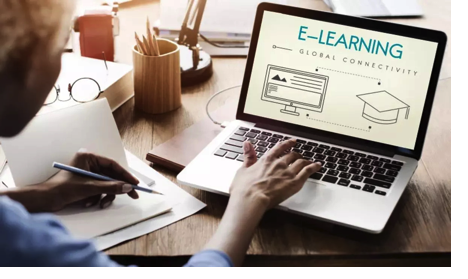In today’s fast-evolving digital landscape, education is undergoing a massive transformation. Once centered around chalkboards and printed textbooks, traditional teaching methods are being reshaped by powerful digital tools designed to enhance learning experiences. At the heart of this revolution are educational software development services – specialized companies and experts creating innovative, engaging, and personalized educational platforms.

These services are not only improving access to education but are also cultivating new skills, inspiring creativity, and preparing young minds for the demands of the future. As technology continues to grow, so does its ability to shape the next generation in ways we could have imagined only a decade ago.
Personalized Learning Experiences
One of the most transformative impacts of educational software development services is the ability to deliver personalized learning experiences. In traditional classrooms, teachers often face the challenge of catering to a room full of students with diverse learning styles, abilities, and paces. Standardized curricula can unintentionally leave some students behind while failing to challenge others ready to advance. Educational software addresses this issue by offering tailored learning paths that adapt to each student’s unique needs in real-time.
Through technologies like artificial intelligence (AI) and machine learning, educational platforms can analyze a student’s performance, identifying patterns, strengths, weaknesses, and even preferred learning methods. For instance, if a student struggles with mathematical concepts but excels in reading comprehension, the software can adjust the difficulty level of math exercises while continuing to encourage reading through more advanced materials. These dynamic adjustments help maintain student engagement and motivation, preventing feelings of frustration or boredom.
Moreover, personalized learning experiences often include a variety of content formats to cater to different learning preferences. Visual learners can benefit from video lessons and infographics, auditory learners can access podcasts and recorded lectures, and kinesthetic learners can engage with interactive simulations and hands-on activities. By offering multiple avenues to absorb information, educational software ensures that no student is left behind simply because of their preferred learning style.
Expanding Access to Quality Education
Educational software development services are playing a critical role in expanding access to quality education for learners across the globe. Historically, educational access has been heavily influenced by geographic location, socioeconomic status, political stability, and gender. Millions of children and adults worldwide have been denied opportunities for learning simply because of where they were born or the resources available to them. Today, thanks to the efforts of educational technology developers, these barriers are steadily being dismantled.
One of the most powerful ways educational software expands access is through remote learning. With internet access and a smart device, students in rural villages, isolated islands, and conflict-affected zones can now access the same world-class materials as those in major cities. Virtual classrooms, online courses, and mobile apps allow anyone to learn, regardless of physical location. Furthermore, cloud-based platforms ensure that learning materials are available 24/7, supporting flexible schedules and overcoming time zone challenges.
Affordability is another key advantage. Traditional education often comes with significant costs: tuition fees, textbooks, transportation, and housing. Educational software, on the other hand, can dramatically reduce these expenses. Many platforms offer free or low-cost courses, and initiatives by non-profits and governments often provide free access to online educational resources. Open-source educational materials are also increasingly available, making quality education financially accessible to a broader audience.
Encouraging Collaborative Learning
Modern educational platforms encourage collaboration beyond the traditional classroom walls. Students can now collaborate on projects, participate in discussions, and share ideas globally through real-time chat, video conferencing, and shared workspaces. Educational software often integrates features that foster teamwork and communication skills, preparing students for the increasingly interconnected global workforce.
Supporting Educators with Advanced Tools
Teachers are also benefiting from educational software. Development services are creating tools that help educators manage classrooms more efficiently, track student progress, and design more engaging lesson plans. Automated grading systems, detailed analytics, and interactive multimedia resources save teachers time and enable them to focus more on personal interactions with students. With better support, educators can innovate their teaching styles and methodologies to suit modern learners better.
Fostering Critical Thinking and Creativity
Today’s educational software goes beyond rote memorization. It encourages critical thinking, problem-solving, and creativity. Interactive simulations, gamified learning experiences, coding tutorials, and design challenges are some of the tools that empower students to think outside the box. By engaging learners in active participation rather than passive consumption, these tools help nurture a knowledgeable but also innovative and adaptive generation.
Preparing Students for a Digital Future
In a world where digital literacy is becoming as crucial as traditional literacy, educational software development services prepare students for the future job market. Platforms teaching coding, robotics, data science, and artificial intelligence are becoming increasingly common, ensuring students have the technical skills needed for tomorrow’s careers. Furthermore, learning digital ethics, online collaboration, and cybersecurity basics is becoming an integral part of modern education.
The Bottom Line
Educational software development services are at the forefront of shaping the next generation. By offering personalized learning, expanding educational access, enhancing collaboration, supporting teachers, and promoting critical skills, they are crafting a future where education is more inclusive, innovative, and impactful. As these services continue to evolve, they promise to transform how we learn and empower young minds to build a better, more connected world.




